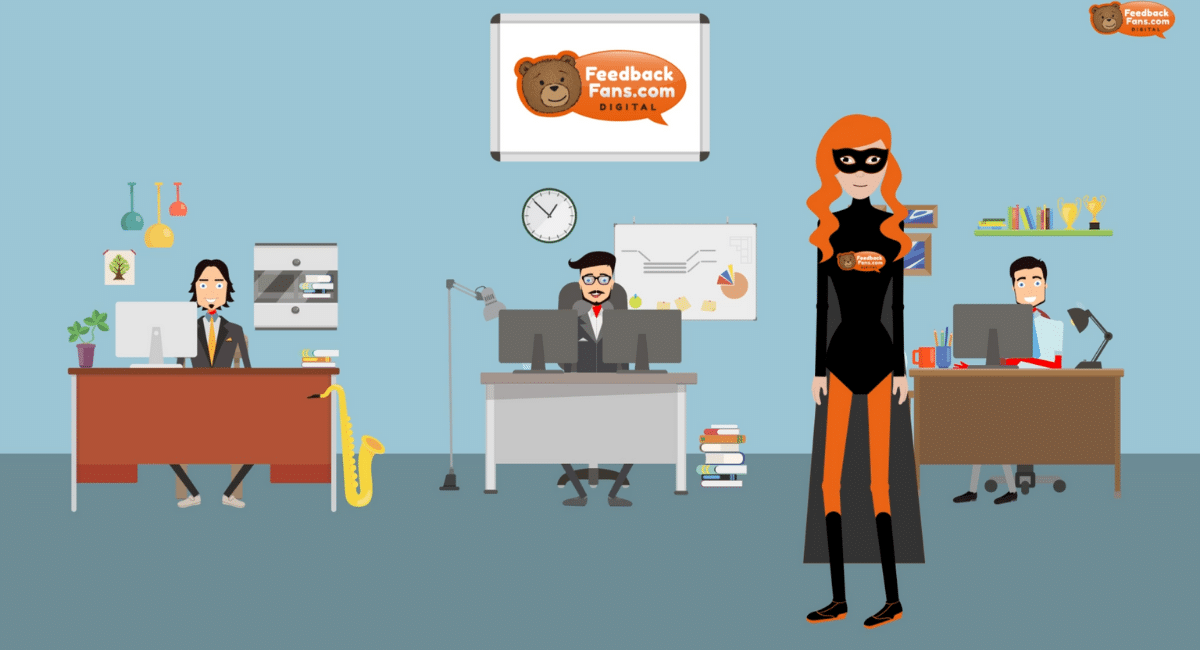When words and still images aren’t enough, animation steps in to tell your story in a way that’s impossible to ignore. From explainer videos to dynamic social media content, animation brings your brand to life with movement, color, and personality. It’s not just about looking cool (though it definitely will); it’s about simplifying complex ideas, engaging your audience, and leaving a lasting impression. Ready to turn your vision into motion? Let’s animate your ideas into reality.
Capture Attention in a Visual World

In today’s fast-paced, visually-driven world, capturing your audience’s attention is more challenging than ever. Animation offers a dynamic and engaging way to stand out from the competition. With eye-catching visuals and movement, animation quickly grabs attention and keeps viewers interested in your message, helping your business make a memorable first impression.
Simplify Complex Concepts

Animation is an excellent tool for breaking down complex information into easy-to-understand visuals. Whether it’s explaining a detailed process, illustrating abstract ideas, or demonstrating how a product works, animation makes it all accessible. By turning complicated concepts into engaging visuals, your audience is more likely to understand—and remember—your message.
Build Brand Awareness and Recognition

Animation can play a vital role in building a strong brand identity. Through unique characters, memorable logos, and consistent visual styles, animation helps create a cohesive brand story that resonates with your audience. By using animation to reinforce your brand’s personality and values, you create a memorable experience that leaves a lasting impact.
Drive Engagement and Sales

Animation doesn’t just capture attention; it motivates action. Through engaging, persuasive animated content, you can encourage potential customers to explore your products or services further and ultimately make a purchase. Animation can also enhance online experiences by making them interactive and immersive, which increases customer engagement and boosts the likelihood of conversions.

F.A.Qs about Animation
In this episode of the Bear Business Vodcast, host Chris Barnard interviews Jenna Farrell, founder of Scopey, a software solution designed to manage and prevent scope creep in professional services. Scope creep, a common issue in creative and tech industries, often leads to revenue loss and project mismanagement. Jenna shares her background as a former digital agency owner and discusses the problems scope creep caused in her business, which led to the creation of Scopey.
The conversation explores the origins and evolution of scope creep, the importance of fluid and live documentation in modern work environments, and how Scopey addresses scope creep by capturing and organizing unapproved changes from client communications. They delve into how Scopey fits into agile project management and offers unique value by helping agencies upsell services and recover lost revenue. Jenna also shares insights into the cultural challenges of upselling and cross-selling, especially in the UK and Ireland, and the importance of educating clients to manage expectations and scope.
The episode ends with a discussion on Scopey’s growth, future plans, and Jenna’s experience securing funding from Enterprise Ireland to scale the business.
Highlights
Introduction to Bear Business and Scopey
Chris introduces the topic of scope creep and the guest, Jenna Farrell, founder of Scopey. Jenna shares her journey from running a digital agency to developing Scopey as a solution to scope creep.
The Problem of Scope Creep
Jenna describes how scope creep affected her business, leading to revenue loss, and explains the static and outdated nature of traditional project scopes, which do not adapt to fluid project requirements.
How Scopey Works
Jenna introduces Scopey and explains how it focuses on tracking client communications to manage scope changes. She uses the analogy of project management as a chaotic kitchen, with Scopey serving as the client-facing menu that helps manage requests.
Modern Approaches to Scope Management
The conversation shifts to agile methodologies and how Scopey fits into modern work practices. Jenna explains how Scopey helps teams adapt to continuous changes without derailing projects.
Upselling Through Scopey
Jenna discusses the importance of upselling and how Scopey makes it easier for agencies to identify out-of-scope work and turn it into additional revenue opportunities.
Cultural Barriers to Upselling in Agencies
Chris and Jenna talk about the cultural challenges of upselling in the UK and Ireland, and the need to shift the mindset from selling to consulting in client relationships.
Scopey’s Early Adopters and Use Cases
Jenna shares how agencies and even industries like law and insurance are using Scopey to manage scope creep and improve their project outcomes.
Scope Creep as an Opportunity
Scope creep is reframed as an opportunity for agencies to better serve their clients and grow their revenue through strategic upselling, made easier by Scopey’s documentation and pricing features.
Future of Scopey and Integration with Other Tools
Jenna discusses the future of Scopey, its recent public beta launch, and upcoming integrations with tools like HubSpot and Salesforce, which will expand its use in larger organizations.
Enterprise Ireland Funding and Growth
Jenna shares her experience working with Enterprise Ireland to secure funding, which will help Scopey create jobs in Ireland and grow into a larger business.
Scopey’s Pricing Model
Jenna explains Scopey’s current freemium pricing model and how they are testing price points as they add new features during their beta phase.
Closing Thoughts and Favourite Game
The conversation wraps up with a light-hearted question about Jenna’s favorite game, Gaelic football, and how she has adapted to the sport since moving to Ireland.
Chris Barnard from FeedbackFans.com welcomes Gemma Johnson from Emotion Brands as his guest on this episode of the Bear Business Podcast to discuss what is takes to be successful with your branding as a Hospitality, Leisure or Hotel business.
If you are in the Branding, Marketing or Hospitality, Leisure or Hotels industries, you won’t want to miss this episode where we dive into the importance of Branding and Brand strategy. We also give practical advise, tips on what ‘great’ looks like in branding and discuss the trends in the industry.
We discuss a wide range of topics:
Introduction and Background
Gemma’s Journey in Design and Branding
The Importance of Brand Strategy
Remote Work and Professional Relationships
Holistic Business Approach
Branding Strategies for Hotels
The Role of Social Media in Branding
Leveraging Technology in Hospitality
Current Trends in Hospitality Branding
Case Study: Hillbrook Hotel
Personal Stories and Favorite Games
Closing Remarks and Outro
Get in contact with Gemma at https://www.emotionbrands.co.uk/hotel-marketing or alternatively, follow her on social media.
Find Gemma on Social Media
LinkedIn – https://www.linkedin.com/in/gemma-johnson-emotion-brands/
LinkedIn (Biz) – https://www.linkedin.com/company/emotion-brands
Find Chris on Social Media
Linkedin – https://www.linkedin.com/in/cjbarnard/
TikTok – https://www.tiktok.com/@feedbackfans
YouTube – https://www.youtube.com/@getfeedbackfans
Examples of our work
Articles
Advert Creative
Find out about our Advert Creative services
Infrastructure & Operations
Find out about our Infrastructure & Operations services



